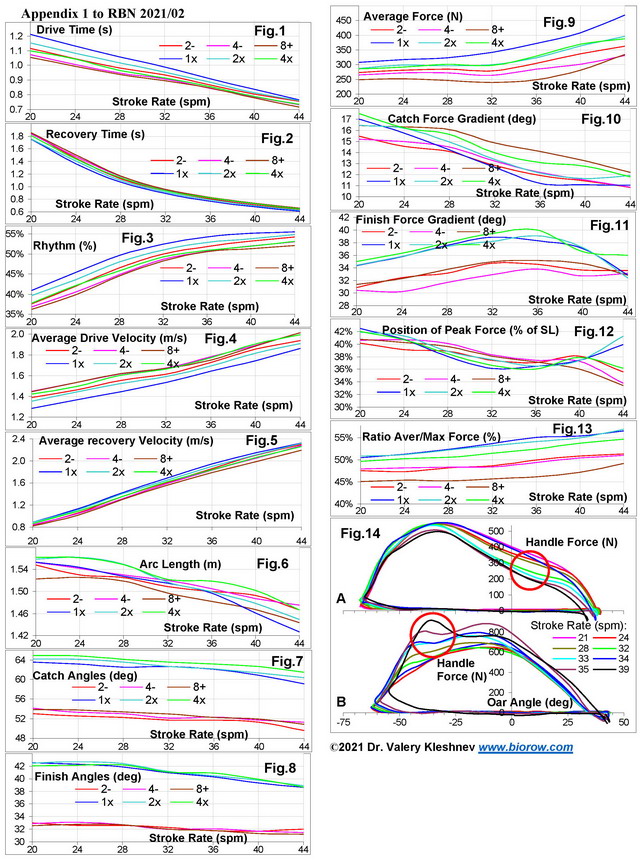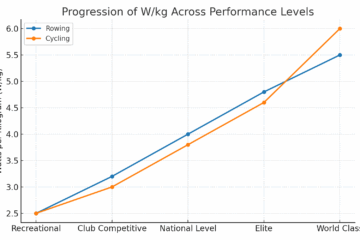The Rate Conversation We Can’t Avoid
Before diving into this discussion, let me clarify my stance. I typically avoid discussing stroke rates—in well-trained crews, the optimal race rate should emerge organically. Yet the conversation persists because higher rates intimidate athletes. The physical demand increases exponentially as the rate climbs.
We must also confront the “long and strong” dogma ingrained in rowers for generations. Modern technique increasingly challenges this philosophy, prompting us to re-examine these principles.
This article targets amateur athletes—club rowers, masters, and recreational competitors—with base-to-good fitness levels. It’s not aimed at elite or high performance athletes, or small boats (singles/pairs) that require different technical approaches. My insights draw from BioRow, British Rowing, and Row2k, targeting crews seeking competitive edges rather than casual racers.
My perspective comes from a unique dual foundation: I’ve been immersed in rowing since the beginning of my athletic career as a young kid, while simultaneously competing at competitive levels in cycling, triathlon, and running. This combination has given me what I call “cross-sport eyes” – the ability to see rowing technique and physiology through multiple lenses. Yet my rowing roots keep these lessons grounded in our sport’s realities. We all have to work with the “tools in our toolbox”. The vast majority of rowing pundits are purely rowing-focused.
The Painful Truth: Higher Rates Are Faster
Every coxswain and coach faces this dilemma, especially with lighter or less conditioned crews: Do we endure the pain of higher rates (32-38 spm) or settle for the comfort of lower rates (28-32)? Physics and race results confirm higher rates are faster, but they demand exceptional fitness and technical precision. These rates require “special athletes”—rowers who can sustain brutal physiological stress while maintaining form.
The science is clear. Lower rates generate more power per stroke, but the boat decelerates noticeably between strokes. Higher rates maintain continuous propulsion. BioRow’s research shows speed peaking at 32-36 spm despite slightly reduced force per stroke. It’s like cycling: mashing big gears feels powerful, but faster pedaling in lighter gears yields better speed.
The 1:1 Ratio Grind
At 32+ spm, rowers face a near 1:1 drive-to-recovery ratio and at 36 it is 1:1—less than a second to reset between strokes. Compare this to the forgiving 1:2 or 1:3 ratios at lower rates. This relentless tempo forces athletes into anaerobic exertion while amplifying technical flaws: rushed slides, lost connection at the catch, and panicked shortening that sacrifices too much length.
Note the statistics below, paying attention to drive time and recovery time, source www.biorow.com.

The Art of Trading Length for Rhythm
This is where we challenge tradition with modern practice. When crews train specifically for high-rate rowing, there’s a valuable technique of *controlled shortening* – deliberately taking slightly less length to maintain better rhythm and boat speed. It’s not about rowing short or choppy, but finding that precise sweet spot where you preserve just enough length to load the legs effectively while enabling faster stroke turnover.
The magic happens when crews develop quick catches and fast hands at these elevated rates, making swift transitions more valuable than maximum reach. This approach proves particularly effective in sprint races; 500m and 1km distances (common for amateur crews) and when rowing with fit athletes in favourable conditions like tailwinds.
However, it’s important to recognise this isn’t a universal solution – in head races, with less experienced crews, or in heavier boats that demand full propulsion per stroke, maintaining more traditional length remains crucial. That said, even in these scenarios, strategic high-rate bursts still play an important role when making moves or finishing strong. The key distinction is that controlled shortening at high rates isn’t about compromising power, but rather redistributing it more efficiently through the stroke cycle to maintain boat momentum. When executed properly by trained crews, this subtle adjustment can be the difference between holding rate with good connection versus fighting to maintain an unsustainable, exaggerated length that ultimately slows the boat.
Training the Transition
Preparing crews for high-rate effectiveness requires specific drills:
1. Rate Ladders/ Gearing Changes: Progressive intervals (e.g., 28→36 spm) to adapt to escalating demands
2. Rate-Capped Pieces: Strict rate targets (e.g., 5x500m @30 spm) to maximise power within constraints
3. Sacrifice Drill: Alternating 300m segments at 28 spm (full length) and 34 spm (controlled shortening) to compare speed/fatigue
*Coaching Note*: These drills often confuse stroke seats—clearly explain the intent and technical focus beforehand if required.
The Amateur’s Verdict
Higher rates win races when implemented correctly. Unfit crews won’t magically succeed by rating high—but then, unfit crews rarely win regardless of strategy. The courageous crew that masters the balance of sufficient length and aggressive rhythm will outpace competitors clinging to comfortable low rates.
Test this yourself: Row 500m at 28 spm (full length), then 500m at 34 spm (controlled shortening). Compare splits and experiences—you might discover untapped speed potential.
In short, lots of short and hard pieces in training; “Train the brain”
Final Thought
“Higher rates reward courage. If your crew is fit and technically prepared, don’t fear a shorter stroke—embrace the rhythm and attack.”



0 Comments